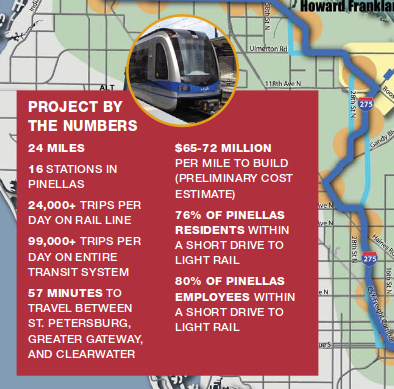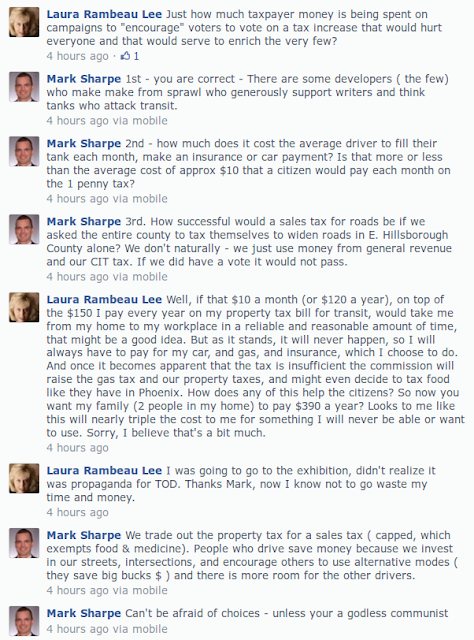Here at the Eye we applaud the success of the MetroRapid Bus Rapid Transit (BRT). It was built in 1 year and at 1/60 the cost of the 2010 proposed high cost light rail along the same transit corridor. We'd still be waiting for the high cost light rail because it would've taken at least a decade to build.
 |
| HART MetroRapid Bus Rapid Transit |
Merging HART and PSTA was never an answer because the two are run differently: their taxing is different, their cost structures are different and their unions are different. They already coordinate, including bus schedules, where it makes sense. Both agencies voted against a merger after the first merger study. The second $200K study was a waste of taxpayer dollars. What difference does a year later make when these agencies are attempting to plan 50 years in the future?
Now Tampa Bay Area Regional Transportation Authority (TBARTA) is trolling for money and a purpose as today's Tribune article reports
the Tampa Bay Area Regional Transportation Authority and CSX have said they could begin discussions of using freight railroad track through the Tampa Bay region for commuter services, although who might run such trains is uncertain.Therefore, yes, we all will be watching commuter SunRail because all Florida taxpayers are paying to build it and then to operate it between 2014 and 2020. The DOT ridership requirements were waived to enable SunRail to get federal funds. SunRail costs at least $1.3 Billion and we're told it "may" take 3400 vehicles off of I-4 in the future. But 200,000 vehicles today are on I-4 today. Do the math and we're spending $1.3 Billion to take less than 2% of vehicles off of I-4. Currently the local municipalities who must take over operating SunRail in 2021 have NO long term funding source to do so. In addition, since SunRail does not go where anyone is going, FDOT is spending $900K a year to pay for buses to pick up passengers off of SunRail to get them where they actually need to go. Will SunRail end up like these commuter rail systems where this article states
Commuter trains really only make sense serving places with large numbers of jobs concentrated in one urban center. The only places like that in the United States–New York, Chicago, Washington, Boston, San Francisco, and Philadelphia–already have commuter trains. The concept is doomed to failure everywhere else.Back to Pinellas. Pinellas's proposal for a $100 million annual tax increase is for their Greenlight Pinellas light rail plan. There's basic math problems with their proposal as we have previously reported here and here.
Where is reference to "Greenlight Pinellas" in the Tribune article? It's nowhere to be found. Is the term Greenlight Pinellas toxic too? Because after Pinellas spent hundreds of thousands of tax dollars on their Greenlight Pinellas marketing campaign advocating to raise Pinellas sales tax 14%, support for the light rail plan has fallen.
As voters and taxpayers are now finding out "what's actually in the Greenlight Pinellas plan", they don't like it. Sound familiar?






